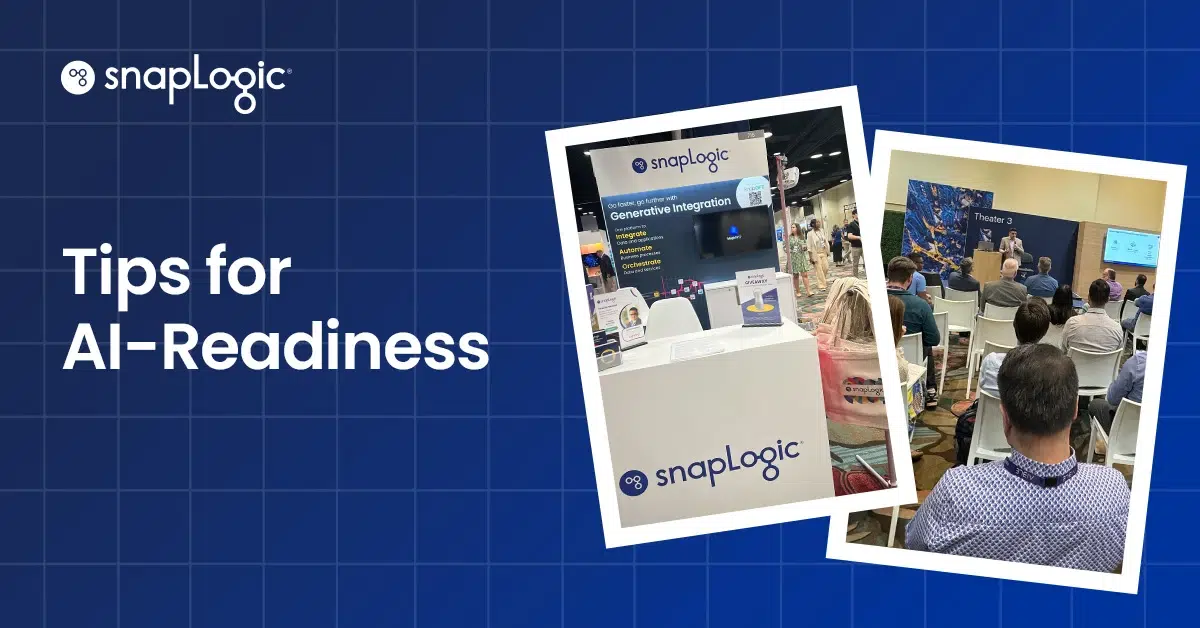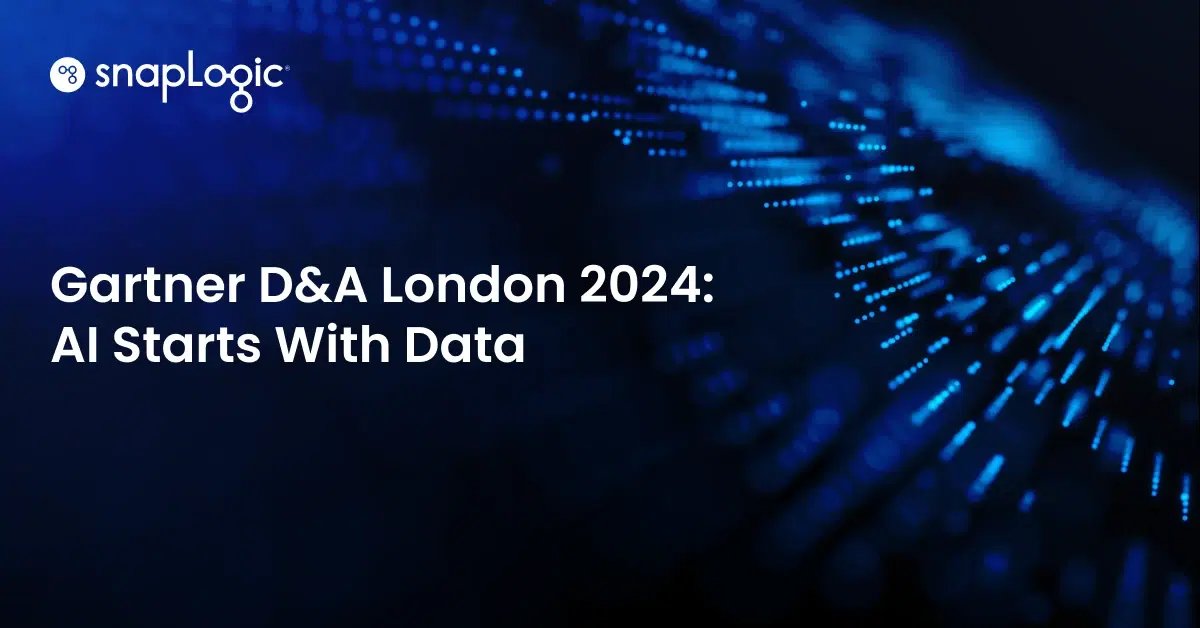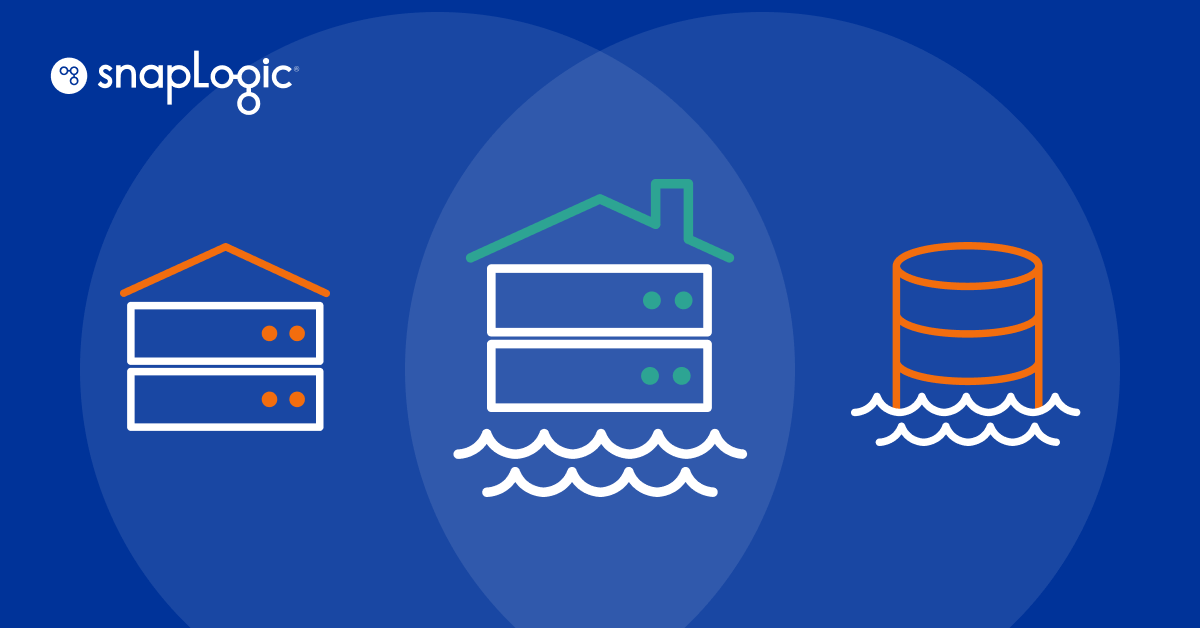We just returned from Gartner’s annual Data & Analytics Summit in Orlando. It was a whirlwind event, packed with fascinating presentations, discussions and new ideas about how to wrangle and manage data in business. Maybe not a huge surprise — the topic of the week was generative AI and its endless possibilities for operational efficiency and making data and analytics accessible to more of the enterprise.
Preparing for GenAI
The keynote session was focused on the importance of generating value through collective intelligence and practical applications of GenAI. They highlighted the rapid adoption of the technology for strategic data and analytics (D&A) initiatives. From Gartner’s research, nearly half of the organizations they’ve polled are piloting GenAI tools, and 10% already have GenAI in production, as of 2023.
A few stats from the presentation on the business impact of generative AI:
- Companies that viewed AI as strategic outperformed peers 80% of the time over 9 years
- 64% believe GenAI is substantial and not overhyped
- 62% of companies had discussed AI at the board level
While benefits like workforce productivity, multi-domain applications, and competitive differentiation are evident, there are also significant risks around data loss, hallucinations, black box nature, copyright issues, and potential misuse. 53% have concerns they would not be able to handle AI risks
Through 2025, Gartner predicts at least 30% of generative AI projects will be abandoned after proof-of-concept due to issues like poor data quality, inadequate risk controls, escalating costs, or unclear business value.
Data management is critical to this equation. They noted that companies with high D&A maturity had 30% higher net incomes than those with a lower level of maturity in that area. However, many organizations struggle to measure and communicate the value created by data and analytics, as only:
- 24% are revamping metrics to be business-oriented
- 22% are improving data storytelling approaches
How to ensure your company is GenAI-ready
To maximize success in 2024 and beyond, data and analytics leaders should consider the following steps:
Plan: Officially plot out your organizational AI goals by soliciting use cases from functional leaders on data and analytics projects, requests, and operations. Work toward these goals as a team and monitor progress.
Measure: Apply financial operations (FinOps) practices to monitor, audit and optimize the costs of applying GenAI tools. Depending on your organization’s D&A maturity level, perhaps create a decision framework for buying GenAI tools vs. building them.
Execute: Prioritize execution in manageable increments. Pilot use cases with an examination of future scalability needs around data privacy, security, etc.
Govern: Revitalize and extend governance frameworks to include responsible, secure AI readiness. Evaluate risk mitigation tools.
Adapt: Explore new operating models that enhance collective intelligence through organizational flexibility and updated leadership paradigms. Design a composable platform architecture to improve flexibility and avoid vendor lock-in.
Educate: Extend and invest in data literacy skills to drive comprehensive AI literacy throughout the workforce. Strengthen your technology teams by instilling robust data engineering practices like knowledge graphs and vector embeddings.
Lead: Move forward with purpose from the core (IT) to the edge (all business units). Adopt an agile, product-centric approach with continuous updates based on user feedback. Always seek to balance individual and organizational needs while making responsible AI the cornerstone for scaling GenAI capabilities.
An integration platform built to accompany your AI journey
SnapLogic has recently advanced as Visionaries in Gartner’s Magic Quadrants for data integration tools and iPaaS:
Our platform provides a gateway for applying GenAI to system integrations, cloud migration, data transformation, orchestration and a variety of other data and reporting processes. This in turn makes it possible to enable GenAI in other parts of the organization. All in an easy-to-use tool with visualized integrations that make it accessible for business users to securely engage their own data integration projects and relieve some time and pressure from IT.










